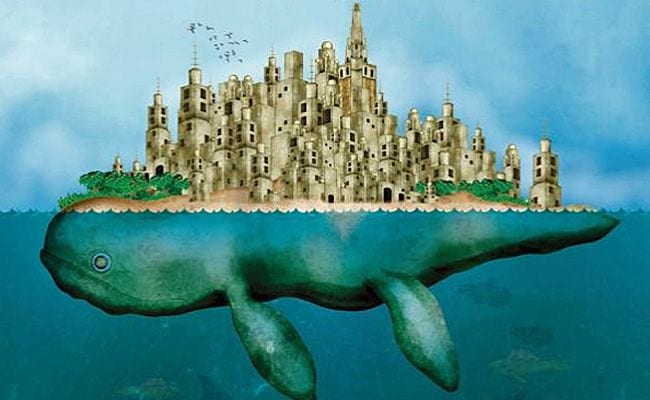
In 1981 Italian architect and designer Luigi Serafini published the Codex Seraphinianus, a comprehensive, illustrated guide to a completely imaginary world in which he depicted the flora, fauna, foods and traditions of a place that existed only within his mind. Serafini spent almost three years working on the details of this world’s unique board games, religious and social history, as well as its architecture and their writing system (which while completely unintelligible, has been compared to early Semitic writings).
The vastness of Serafini’s fictitious universe and the intricateness of his details must have served as inspiration for Jeff VanderMeer’s Wonderbook: The Illustrated Guide to Creating Imaginative Fiction, which, while equally beautiful and impressive in its scope, actually does serve a much more practical purpose: to enlighten readers in the process of creating fiction.
The mere idea of a writing guide might provoke sighs and groans from those expecting complex diagrams and detailed, textbook-like instructions, but VanderMeer approaches writing from a place that has rarely been seen from before. In the introduction he explains that “even the most mundane moments of our existence can be inhabited by hidden complexity and with wonder” and with this purpose he created a unique book aimed to stimulate writers’ imaginations.
The author refers to his creation as a “cabinet of curiosities” and this is precisely what it feels like. It’s impossible, upon first having the book in your hands, not to go through every page with childlike wonder, marveling at the detail and eccentricity with which illustrator Jeremy Zerfoss (the main artist) filled every single page.
Upon reading the book the way it was intended to be read (although that seems like a debatable concept based on VanderMeer’s user friendly structure) you realize that concealed within the colorful figures you just saw are great ideas and suggestions on how to create your own fiction. “You should be able to pick up the basics of writing fiction from Wonderbook but also find that it challenges you from time to time with more advanced material” he adds. The first part of the book serves as an overview to the way in which you’ll be able to explore this world. The author sets up a series of guidelines explaining how to approach the book, how to organize your ideas, and introduces readers to figures he calls “your guides”; odd looking little characters who present themselves with unique personalities and ask you to seek them out whenever you need help.
He then invites readers to embark on the journey with him as he sets out to try and create adequate symbols for intangible elements like “inspiration”, which he believes can be supported by imaginative outputs among which are curiosity, receptivity, immediacy and passion (which he concedes might seem like a challenge for cynics) as well as inputs which are more related to personal experience and which include religion, family, environment etc. To reveal such facts about Wonderbook feels slightly wrong, because it’s better to let each reader discover it on their own, so instead of concentrating too much on its “textbook” qualities, it’s more interesting to perceive the way in which the author tried to evoke mental processes through images, something that feels groundbreaking because it leads us into endless dilemmas regarding the dichotomy between words and images.
Literature snobs will unarguably say that words have the ability to go beyond the surface of images, while those devoted to images might recur to the adage that an image is worth… well, you know the rest. It will probably be fascinating to see different reactions to the undeniable sense of completeness in Wonderbook which seems to please both perspectives.
At the center of the book lies one of its most complex figures simply titled “the Story Fish”. Drawn as if it belongs to an ancient book about a now lost species, its opaque colors and leather-esque scales couldn’t seem any less transcendental if they tried, but VanderMeer has turned the fish into an important creature by giving each of his body parts the name of a step in the process of writing a story. Its severe teeth are its prologue, its strange looking tentacle its lure, and so on and so on, until we realize that the Story Fish is both an image and literature itself. How he achieved this dual purpose is reason enough why the book truly earns its name.
Besides talking about his own approach to creating fiction, VanderMeer includes other writers’ opinions, since he has acknowledged in interviews that despite his creating this book, he doesn’t think he has the last word in how to help others find their own voice. Wonderbook features spotlights on people like Karen Lord, Scott Eagle, George R.R. Martin and Neil Gaiman, as well as ideas that should be explored further in a companion website filled with exercises, more images and the promise of updates.
With its refreshing sense of learning through alternative processes, Wonderbook is sure to become an enlightening tool in academia as well as a reminder that nothing can contain the power of imagination.


![Call for Papers: All Things Reconsidered [MUSIC] May-August 2024](https://www.popmatters.com/wp-content/uploads/2024/04/all-things-reconsidered-call-music-may-2024-720x380.jpg)



